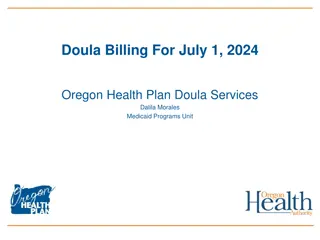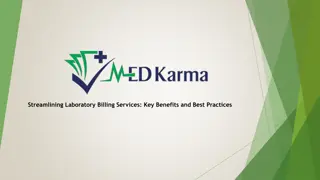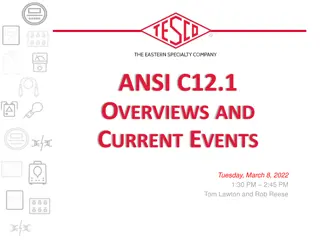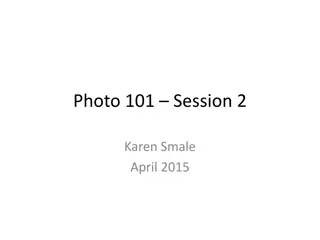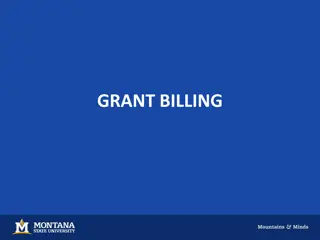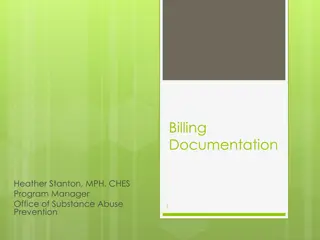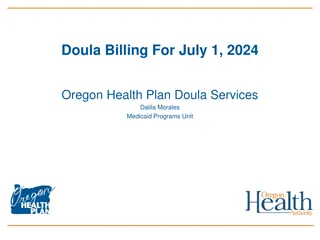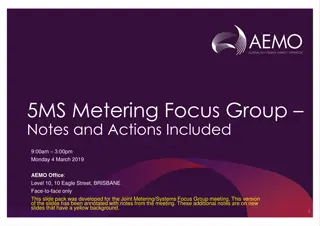Guidelines for Heat Networks Metering and Billing in Buildings
Guidelines for heat networks metering and billing in buildings cover regulations, scopes of district heat networks and communal heating, duty to install meters or HCAs, meter viability and accuracy, and requirements for new buildings and major renovations in both district heat and communal setups. The guidelines emphasize accurate measurement, proper installation of meters, and individual metering in new constructions and major renovations to ensure cost-effective and technically feasible solutions. Compliance with regulations is key to efficient heat network management.
Download Presentation

Please find below an Image/Link to download the presentation.
The content on the website is provided AS IS for your information and personal use only. It may not be sold, licensed, or shared on other websites without obtaining consent from the author. Download presentation by click this link. If you encounter any issues during the download, it is possible that the publisher has removed the file from their server.
E N D
Presentation Transcript
Heat Networks Metering and Billing Chris Smith NMRO
Scope 1 District Heat Networks Multiple buildings 1 or more customers Communal Heating 1 building Multiple customers
Scope 2 Apartment (domestic) Cooking facilities Sanitary facilities Used as living space Multi use (non-domestic) Partitioned space Non-residential activity May be some shared services
Scope 3 Heating via distributed hot water Steam Cooling via distributed Chilled liquids Hot water
Duty to install meters or HCAs For DH, block-level meters required for buildings with more than one final customer Individual meters and temperature control devices must be installed unless it is not cost effective or technically feasible to do so In buildings with more than one final customer, where individual meters are not viable, then heat cost allocators, TRVs and a hot water meter must be installed, where feasible
Meter viability and meter accuracy Meters must accurately measure, memorise and display consumption by a final customer. Where the installed meter has been approved under the Measuring Instruments Directive (MID) and properly maintained the NMO will generally accept this as of appropriate quality
New buildings and major renovations District Heat Individual meters must be installed where a new DH connection is made to a newly constructed building, or where a building supplied by DH undergoes major renovation (that relate to the technical services of the building) Major renovation is defined as costing greater than 25% of the value of the building, excluding land.
New buildings and major renovations Communal From 31 December 2016 individual meters must be installed where a to a newly constructed building, or where a building undergoes major renovation (that relate to the technical services of the building) where it is technically and economically feasible to do so. Major renovation is defined as costing greater than 25% of the value of the building, excluding land.
Billing Where meters are fitted, if technically possible and economically justified bills and billing information must be accurate, based on actual consumption, and comply with Schedule 2 Heat Suppliers must not make a specific charge for the provision of a bill or billing information but reasonable costs may be passed on to final customers
Timings Came into force 18 December 2014 DHN requirements from this date Billing 30 December 2014 DHNs and Communal Notifications 31 December 2015 Or completion of a project (i.e first customers) if after that date For buildings with more than one final customer: viability tests (and any installation) by 31 December 2016 Bills at least annually and billing information at least twice per year
Heat Supplier Who is: Supplying heat to the Final Customer? Collecting payment? Buying fuel? Authority to fit meters? Could be (case by case) Owner Operator/managing agent Service agent Other
Feasibility Technical and Economic Return on investment in 10 years Feasibility test does not apply to building level meters in multi- occupancy buildings on DHNs
Notifications 31 December 2015 Notifications Template Minimum of statutory information UPRNs for Scotland Bulk form Incomplete forms will require follow up Email box: heatnotifications@nmo.gov.uk
Based on Intelligence and Risk Population/ Penetration Low High High 20% 50% Likelihood 10% 20% Low
Balanced Enforcement Model Changing Behaviour Non-directed Intervention Directed Intervention Sanctioning Support Education Push Pull
Proportionate Actions Informal Warning Enforcement Undertaking Severity Compliance Notice Non-compliance Penalty Formal Caution Court Action Publicity
Chris Smith National Measurement and Regulation Office Chris.Smith@nmro.gov.uk https://www.gov.uk/government/collections/national- measurement-office-enforcement-authority


